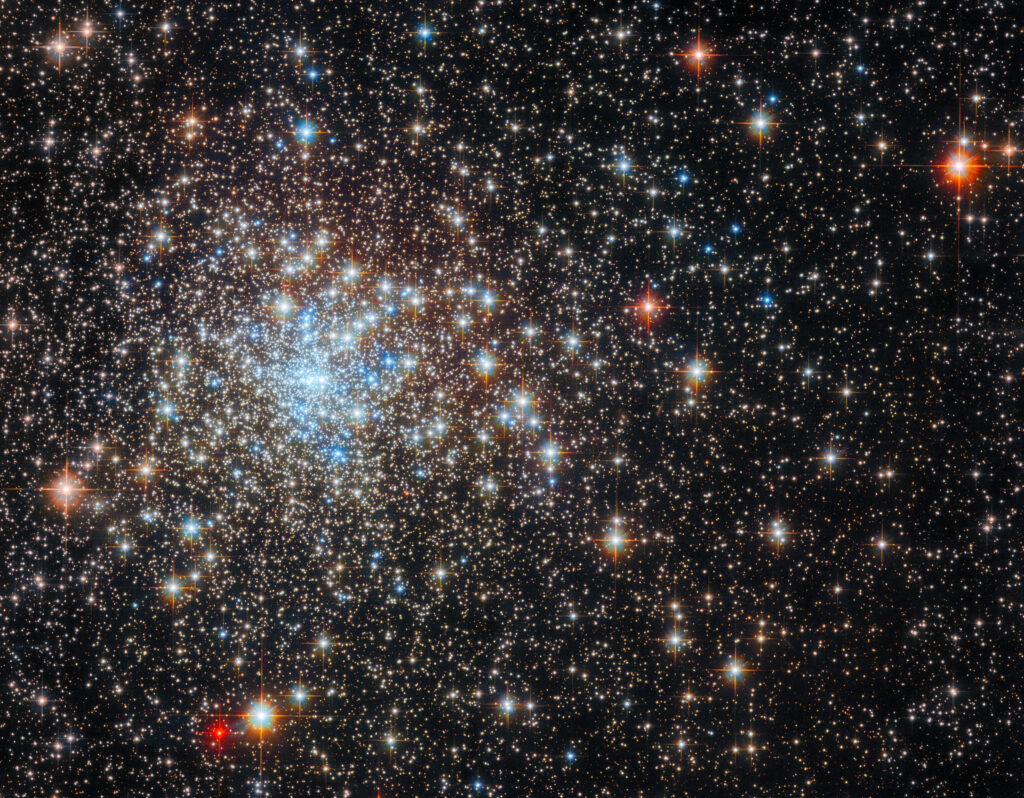The Hubble mission support group has published a new image of a deep space object. It captures the globular cluster NGC 6325, located at a distance of about 26 thousand light-years from Earth in the direction of the constellation Ophiuchus.

Globular clusters are dense and closely related clusters of stars that orbit the galactic center as a single moon. They can number from several tens of thousands to a million participants.
As a rule, astronomers study globular clusters to better understand the processes of star formation and the evolution of stars. But the NGC 6325 image was taken with a completely different purpose. Astronomers have used Hubble to detect a “gravitational monster” — a medium-mass black hole hiding in the center of the cluster.
Previous studies have shown that the distribution of stars in some globular clusters (including NGC 6325), characterized by a particularly high density of stellar population, differs slightly from the calculated ones. One possible explanation for this discrepancy is the presence of a black hole, the gravity of which slightly affects the movement of stars.
In order to test this assumption, astronomers used the WFC3 camera installed on Hubble to take pictures of a large number of globular clusters. They hope that the data collected during the review will either confirm the existence of medium-mass black holes in the centers of such clusters or provide an alternative explanation.
Follow us on Twitter to get the most interesting space news in time
https://twitter.com/ust_magazine

